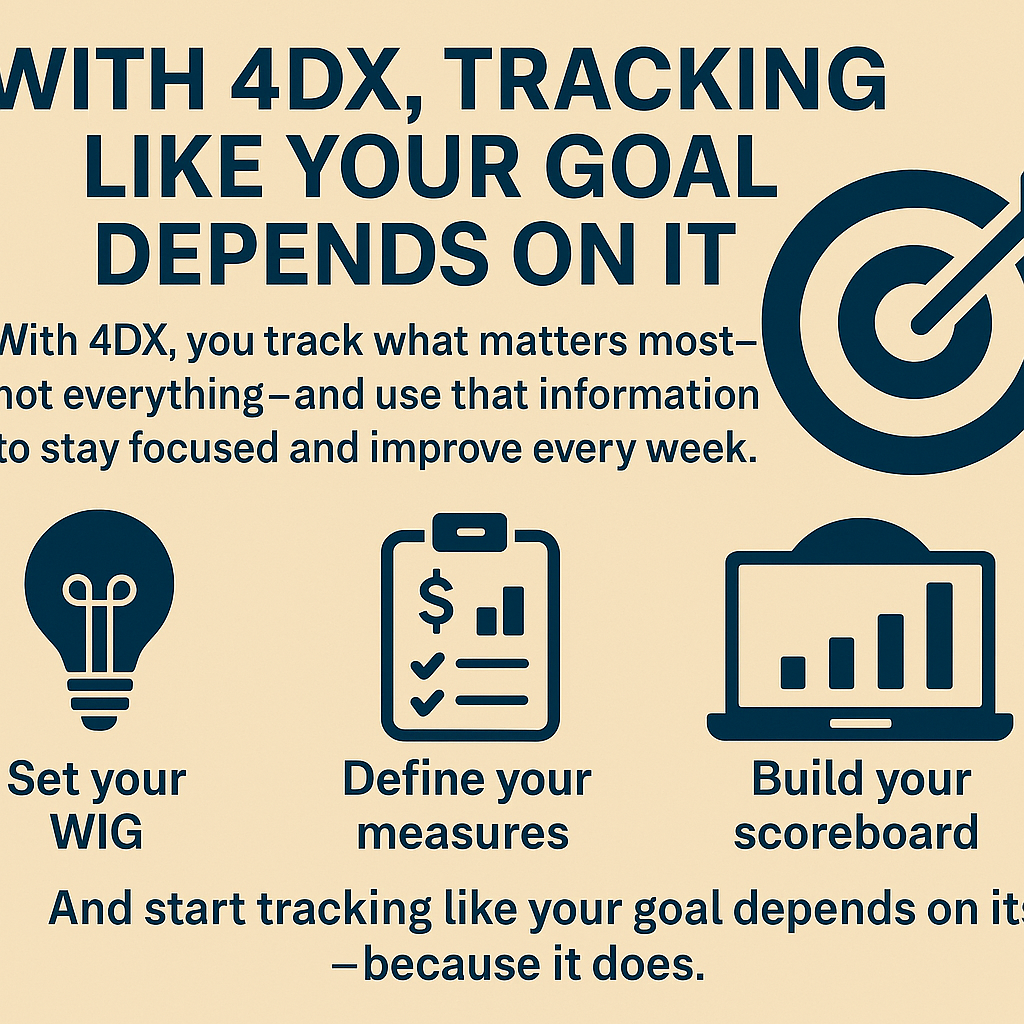Tracking progress is one of the most overlooked but essential parts of achieving a goal. Without regular tracking, it’s easy to lose momentum, miss problems early, or forget what you committed to. The 4 Disciplines of Execution (4DX) offers a clear and actionable way to monitor your progress consistently—so you can adjust, improve, and succeed.
In this article, you’ll learn how to track your progress effectively using the 4DX method, whether for personal, team, or organizational goals.
Why Tracking Matters
Here’s what happens when you don’t track your progress:
- You forget what you committed to
- You can’t tell if you’re improving
- You don’t notice when you drift off course
- You lose motivation
Tracking provides accountability, motivation, and data to make smarter decisions.
Step 1: Start With a Clear WIG
Progress tracking begins with a clearly defined goal—your Wildly Important Goal (WIG).
Use this format:
“From X to Y by [date]”
Example: “Grow YouTube subscribers from 1,000 to 5,000 by September 30”
If your goal isn’t clear, your tracking will be chaotic or meaningless.
Step 2: Identify Your Lead and Lag Measures
To track progress effectively, you need to measure both:
- Lag Measures = Results (e.g., sales, weight loss, traffic)
- Lead Measures = Actions that drive the results (e.g., calls made, articles written)
Track both types every week. Lead measures show if you’re doing the right work. Lag measures show if it’s paying off.
Step 3: Use a Scoreboard to Visualize Progress
A scoreboard makes progress visible. When you can see the results of your effort, you stay engaged.
Your scoreboard should:
- Be simple enough to understand in 5 seconds
- Be updated weekly (or daily)
- Track both lead and lag measures
Formats to consider:
- Google Sheets or Excel chart
- Trello or Notion board
- Whiteboard with columns and progress bars
- Habit tracker apps for solo goals
Tip: Color-code your metrics (e.g., green = on track, red = behind)
Step 4: Review Progress in Weekly Accountability Sessions
Tracking only matters if you review it regularly. That’s where Discipline 4 of 4DX comes in.
Each week, ask:
- Did I hit my lead measure targets?
- What are the latest lag measure results?
- What worked? What needs to change?
- What will I commit to this week?
For teams: Make this a 15–30 minute WIG meeting.
For individuals: Use a journal, planner, or calendar time block.
Step 5: Adjust Based on What the Data Tells You
Tracking reveals patterns. Over time, you’ll see what actions correlate with results.
Use your tracking data to:
- Refocus on more effective lead measures
- Remove distractions or low-impact activities
- Raise your standards if you’re exceeding expectations
- Re-engage if you’re falling behind
Data should drive your next action—not your mood.
Sample Progress Tracking Setup
WIG: Lose 5kg in 60 days
Lag Measure: Weight recorded weekly
Lead Measures:
- Track meals daily
- Exercise 5x per week
Scoreboard:
- Weekly weight chart
- Checklist for each workout and food log
Weekly Review:
- Check off habits
- Update weight
- Reflect and plan for next week
Common Tracking Mistakes to Avoid
- Tracking too many things: Stick to what truly impacts your WIG
- Focusing only on outcomes: Lag measures are too slow for course correction
- Inconsistent updates: Set a day and time for tracking
- No visual system: Without a scoreboard, data gets ignored
Final Thought: Tracking Turns Hope Into Action
Hope is not a strategy. Tracking gives you the clarity to know what’s working, the data to stay objective, and the motivation to keep going.
With 4DX, you track what matters most—not everything—and use that information to stay focused and improve every week.
Set your WIG. Define your measures. Build your scoreboard. And start tracking like your goal depends on it—because it does.
